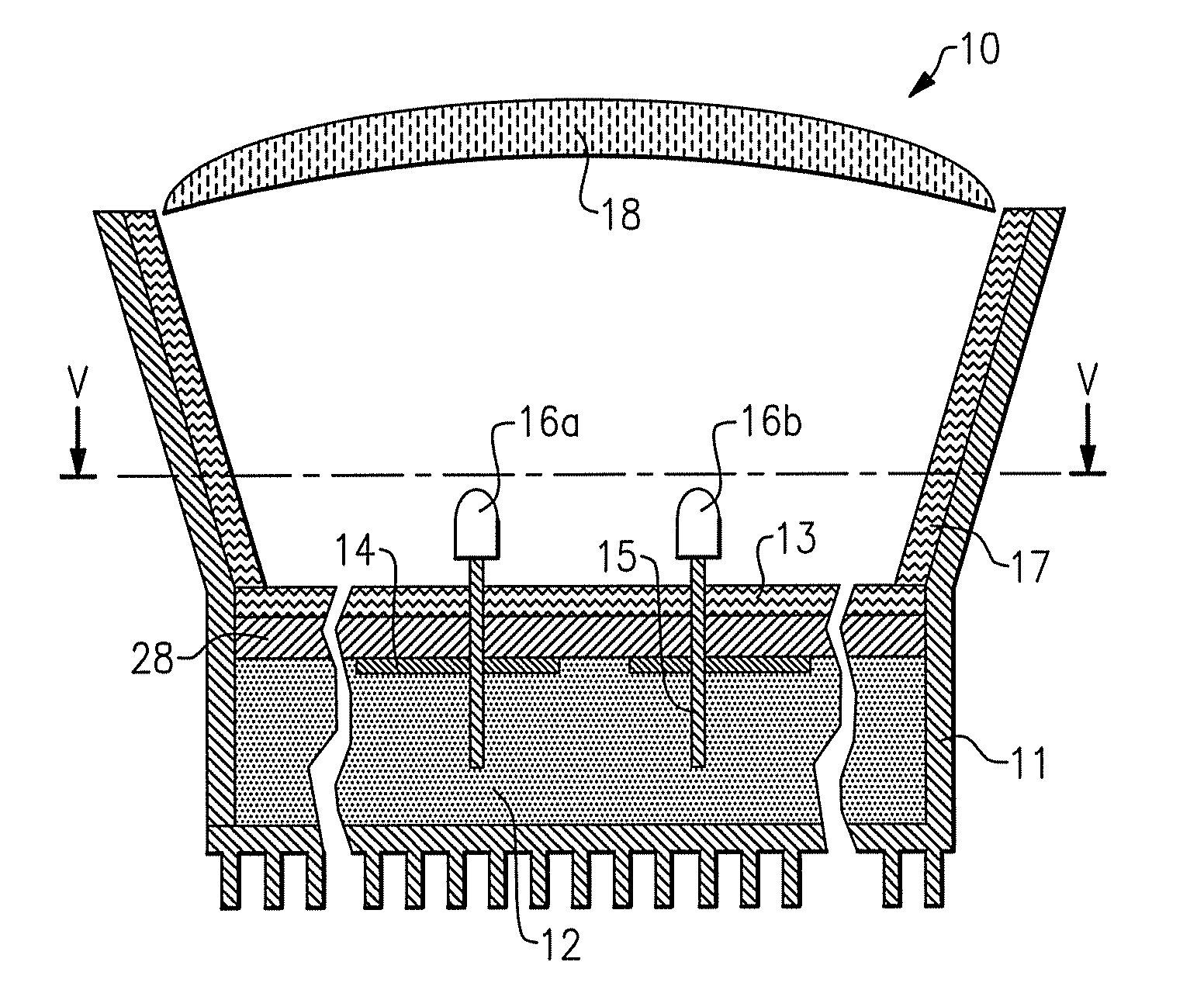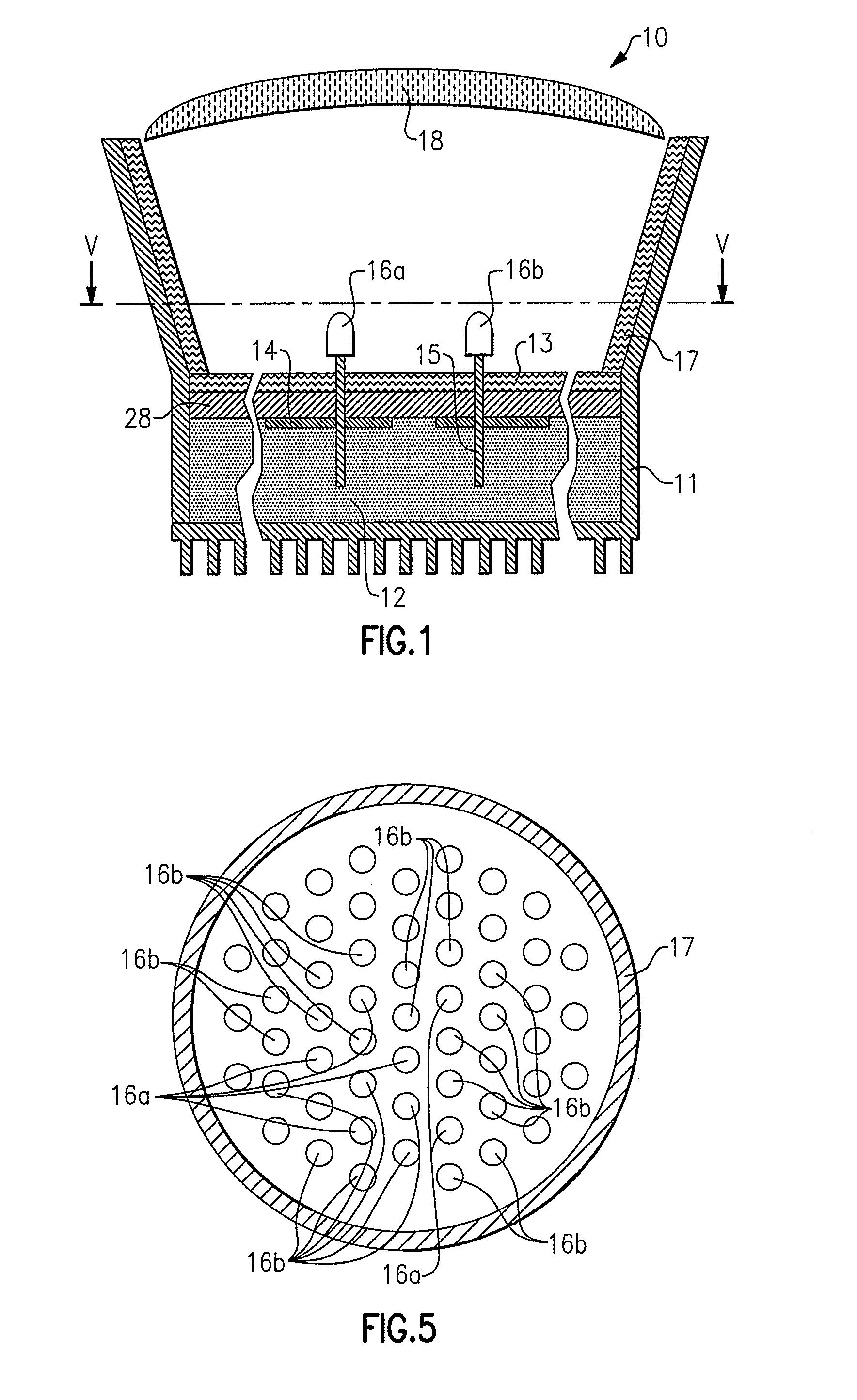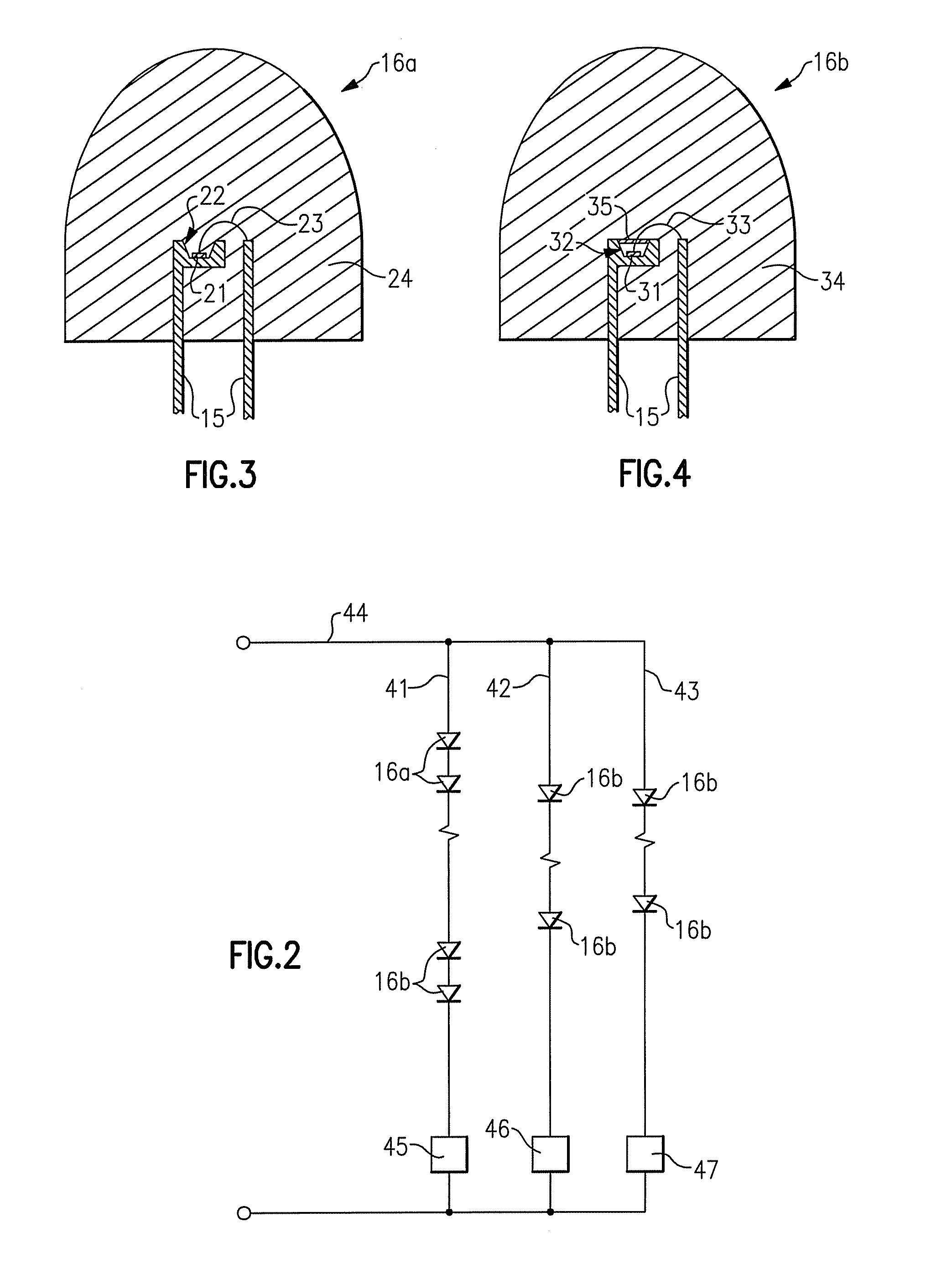High efficiency lighting device including one or more solid state light emitters, and method of lighting
a lighting device and solid-state technology, applied in the field of lighting devices, can solve the problems of significant deficiency in green, poor color rendering, and particularity deficient in red color rendering, and achieve the effects of reducing the efficiency of such systems, increasing the complexity and cost of circuitry, and low efficiency
- Summary
- Abstract
- Description
- Claims
- Application Information
AI Technical Summary
Benefits of technology
Problems solved by technology
Method used
Image
Examples
first embodiment
[0410]FIG. 1 depicts a lighting device in accordance with the present inventive subject matter.
[0411]Referring to FIG. 1, there is shown a lighting device 10 that includes a heat spreading element 11 (formed of aluminum), electrically insulating regions 12 (comprising any desired material which is thermally conductive and not electrically conductive, a wide variety of which are well-known to those skilled in the art, e.g., ceramic, epoxy or silicone optionally filled with silicon carbide, diamond, cubic boron nitride, alumina, etc), a highly reflective surface 13 (which can be formed in situ by polishing the surface of the aluminum heat spreading element, or made of MCPET® (marketed by Furukawa, a Japanese corporation)), conductive traces 14 formed of copper, lead frames 15 formed of silver-plated copper (or silver-plated mild steel), packaged LEDs 16a, 16b (described in more detail below), a reflective cone 17 (made of MCPET®) with a diffuse light scattering surface and a diffusing...
second embodiment
[0439]FIG. 6 depicts a lighting device in accordance with the present inventive subject matter.
[0440]Referring to FIG. 6, there is shown a lighting device 110 which includes a heat spreading element 111 (formed of aluminum), electrically insulating regions 112 (comprising any desired material which is thermally conductive and not electrically conductive, a wide variety of which are well known to those skilled in the art, e.g., ceramic, epoxy or silicone optionally filled with silicon carbide, diamond, cubic boron nitride, alumina, etc), a highly reflective surface 113 (formed in situ by polishing the surface of the aluminum heat spreading element, or made of MCPET® (marketed by Furukawa, a Japanese corporation)), conductive traces 114 formed of copper, lead frames 115 formed of silver-plated copper (or silver-plated mild steel), packaged LEDs 116a, 116b (described in more detail below), a reflective cone 117 (made of MCPET®) with a diffuse light scattering surface and a diffusing el...
third embodiment
[0468]FIG. 11 is a schematic diagram of a high efficiency lamp 150 in accordance with the inventive subject matter. The lamp 150 includes a lower housing 151 and an upper housing 152, light sources 163 and red / orange light emitting diodes 164. The lower housing 151 is a cast aluminum housing having fins surrounding the circumference and provides sidewalls of the mixing enclosure 158. The lower housing may be a lower housing of an LR6 fixture from Cree LED Lighting Solutions, Inc., Durham, N.C., with the trim flange removed such that the housing does not extend past the lens 157. Other suitable lower housing materials having similar thermal properties could also be utilized. The lower housing 151 and the lens 157, in combination, comprise an enclosing structure that surrounds the light sources 163 and the red / orange light emitting diodes 164.
[0469]The upper housing 152 includes a cavity 153 and also has fins to increase the overall area for heat extraction. The upper housing 152 has...
PUM
 Login to View More
Login to View More Abstract
Description
Claims
Application Information
 Login to View More
Login to View More - R&D
- Intellectual Property
- Life Sciences
- Materials
- Tech Scout
- Unparalleled Data Quality
- Higher Quality Content
- 60% Fewer Hallucinations
Browse by: Latest US Patents, China's latest patents, Technical Efficacy Thesaurus, Application Domain, Technology Topic, Popular Technical Reports.
© 2025 PatSnap. All rights reserved.Legal|Privacy policy|Modern Slavery Act Transparency Statement|Sitemap|About US| Contact US: help@patsnap.com



